This post is also available in: Italian
This itinerary reaches several nurseries descends from Pesaro (Marche) to Abruzzo, eventually reaching Molise, going across very different territories and landscapes. Featuring the Apennine mountains, which gently slope down to the sea, it also includes gentle hills dotted with medieval villages, ancient towns, orchards and vineyards, stately homes and ancient sharecropping houses, low and sandy beaches, but also cliffs and wild areas, sometimes reachable only by sea or along ancient paths through the Mediterranean scrub. There are also oasis, parks and natural reserves, culinary treats and excellent wines, art and culture.
In Abruzzo, you’ll come across a rugged but equally superb pristine landscape, in a series of parks, reserves and natural oasis (starting with National Park of Abruzzo and Molise and the National Park of Gran Sasso and Monti della Laga). Abruzzo also features mountainous and barren landscapes, villages and ancient castles, woods full of monumental trees, wild areas but also ski resorts and an 82 mile-long coastline with very popular shores and some pristine, uncrowded beaches. Not to mention cool pine forests, cliffs, and coves.
Finally, there’s Molise, the smallest Italian region after Val d’Aosta: it offers Paleolithic, Samnite and Roman ruins, medieval villages similar to the very nativity scene, and fishing villages; not to mention ancient fountains and sanctuaries, 22 miles of beaches, boundless landscapes with mountains, woods, pastures, clearings and grazing horses, sheep tracks and quaint villages. It’s a land with an enchanted atmosphere, still echoing tales and legends about shepherds, wolves, wayfarers and brigands. Upper Molise, in particular, can also be visited by the Trans-Siberian train, a historic track that unwinds among mountains and forests and was built at the end of the XIX century to connect the Apennine areas.
Given the distances and the multitude of places to visit along the way, this itinerary is the longest of all, but it’s absolutely worth your time. The mentioned nurseries are very different from each other, like the nursery-garden-garden in Pesaro, and some forest facilities on the Molise mountains, inside parks and reserves, as well as many gardens and wonderful landscapes.
The nurseries
The map shows the nurseries and other locations included in our suggested itinerary. Distances are also mentioned, in order to make it easier and more practical for you to make your choice and save petrol and time.

Sorbo Nursery, in Montefiorentino di Frontino (PU): Antonio Santini, with great dedication and deep knowledge of botany, has opened this nursery mainly for protecting the local flora biodiversity. He has specialized himself in ancient fruit varieties and now offers over 350 species, with 110 apple trees, 98 pear trees, peaches, cherries, vines, lesser-known fruits such as cornelian cherry, common medlar, sorb, and azaroles. In his nursery, Antonio also collects rare and common native plants, forest fruit plants and shrubs, such as raspberries, blueberries, blackberries, currants and wild strawberries; wild fruit trees such as opal maples, poplars, holm oaks, common oaks, downy oaks, turkey oaks, buckthorn, willows, elderberries, goat willows, wild service trees, wild elm, and Italian buckthorn. Il Sorbo is also specialized in the production of truffles: to do so, by mycorrhizal work, downy oaks, black hornbeams, turkey oaks, holm oaks, hazelnuts, rock roses, and oaks are thoroughly grown, along with other plants suitable for this very purpose.
Distances to other nurseries: 38,5 miles to Il Giardino di S. Maria – 90 miles to Tropico del Conero Nursery – 158 miles to Il Giardino Officinale – 178 miles to Pungilandia – 182 miles to La Felce Nursery – 235 miles to Le Marinelle Forest Nursery – 242 miles to Verde Molise Nursery – 291 miles to Selva del Campo Forest Nursery.
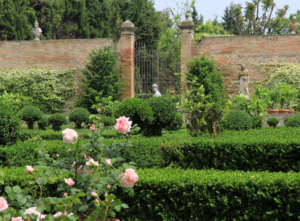
Il Giardino di S. Maria Fiori e Piante, in Pesaro (PU): an evocative nursery located within the premises of an ancient palace, Villa Almerici. It offers shrubs, creepers, perennial, annual and biennial plants, as well as species for butterflies and cut flowers, a wide selection of seeds, soils, fertilizers, and assorted items for the garden. It also sells its products online.
Distances to other nurseries: 56,5 miles to Tropico del Conero Nursery – 38,5 miles to Sorbo Nursery – 122,5 miles to Il Giardino Officinale – 143 miles to Pungilandia – 146,5 miles to La Felce Nursery – 200 miles to Le Marinelle Forest Nursery – 206 miles to Verde Molise Nursery – 274 miles to Selva del Campo Forest Nursery.
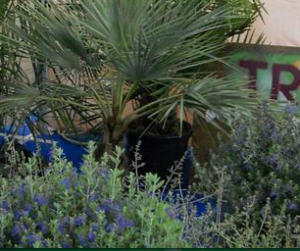
Tropico del Conero Nursery, in Coppo, Sirolo (AN): this nursery is located on the southern slopes of Mount Conero, in Coppo, near Sirolo, in the province of Ancona. Owned by Mirco Bagaloni, it is specialized in the production of Mediterranean and subtropical plants for cool Mediterranean climates, with large collections of subtropical palms, aloes, agaves and other Agavaceae, subtropical trees, and flowering shrubs. Sheltered from the cold Bora winds from the mountain and the salty gales from the hill above, it offers an ideal microclimate for the variegated and luxuriant Mediterranean scrub in the area; local flora includes holm oaks, strawberry trees, mastic trees, and many other species.
For some of those trees, this is the furthermost available environment still sheltered from the northern cold mist.
Distances to other nurseries: 92 miles to Pungilandia – 90 miles to Sorbo Nursery – 56 miles to Il Giardino di Santa Maria – 97 miles to La Felce Nursery – 144 miles to Le Marinelle Forest Nursery – 153,5 miles to Verde Molise Nursery – 199 miles to Selva del Campo Forest Nursery.
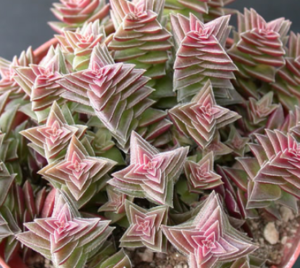
Pungilandia Nursery, a Cepagatti (PE): established by Domenico Rocchi, this is not just a greenhouse where succulents are cultivated and sold; there are also rare, curious and unusual plants. It is a meeting place for friends to discuss and share their experiences, organizing and enlarging their collections (small or big), with the aim of spreading the rarest species often threatened with extinction.
Distances to other nurseries: 72,7 miles to Il Giardino Officinale – 92 miles to Pungilandia – 90 miles to Sorbo Nursery – 56,5 miles to Il Giardino di Santa Maria – 97 miles to La Felce Nursery – 144 miles to Le Marinelle Forest Nursery – 153 miles to Verde Molise Nursery – 199 miles to Selva del Campo Forest Nursery.
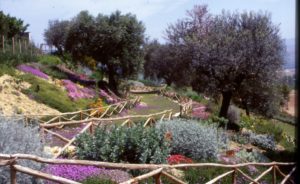
Azienda agricola Giardino Officinale: “Giardino Officianale” farm, owned by Filippo Torzolini and Antonella Cichetti, produces medicinal plants with organic methods. In 1986, Filippo (then a 24-year-old industrial expert, researcher and plant enthusiast – medicinal plants in particular) decided to convert the small family farm into this cultivation. Today, the company, extending over 6 hectares, cultivates medicinal and aromatic plants in the field or in greenhouses or in pots; endemic varieties of cereals (among which durum wheat ‘Saragolla’ and ‘Granone’), a small vineyard, orchard and olive grove; it breeds domestic animals (thus producing manure, used for fertilisation, and soil for herbaceous plants and shrubs in pots). It also includes a demonstrative botanical garden dedicated to educational activities and rural tourism.
Distances to other nurseries: 30,5 miles to Pungilandia – 158 miles to Sorbo Nursery – 122 miles to Il Giardino di Santa Maria – 73 miles to La Felce Nursery – 77,6 miles to Le Marinelle Forest Nursery – 87 miles to Verde Molise Nursery – 130,5 miles to Selva del Campo Forest Nursery.
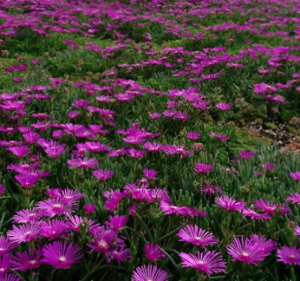
La Felce Nursery, in Chieti: The nursery La Felce is a company in Chieti that designs, builds and maintains green areas, garden and parks. Chiefly, it produces perennial herbaceous plants and ornamental grasses, Sedum flowering lawns for roof gardens, flowerbeds, roundabouts, traffic islands.
Distances to other nurseries: 6,2 miles to La Felce Nursery – 178 miles to Sorbo Nursery – 143 miles to Il Giardino di S. Maria – 92 miles to Tropico del Conero Nursery – 30,5 miles to Il Giardino Officinale – 60 miles to Le Marinelle Forest Nursery – 66 miles to Verde Molise Nursery – 105 miles to Selva del Campo Forest Nursery.
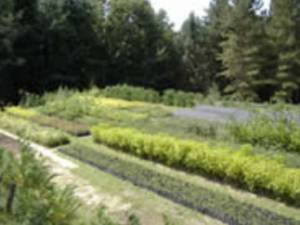
Vivaio Forestale Regionale “Le Marinelle”, in Petacciato (CB): Thanks to its location at sea level, it is not so far away from the seashore, it is exclusively dedicated to the production of typical plants of the Mediterranean scrub and of the phytoclimatic band of Lauretum, to use in public and private reforestation actions for ornamental reasons, for parks and gardens in areas with an altitude between 500 -600 meters above the sea level. The young plants grown in containers belong to conifer species (maritime pines, Aleppo pines, cypresses, domestic pines), bushy and tree broadleaved species (eucalyptuses, acacias, palms, holm oaks, tamarisks, oleanders, pittosporums, myrtles etc.)
Distances to other nurseries: 14 miles to Verde Molise Nursery – 235 miles to Sorbo Nursery – 199 miles to Il Giardino di S. Maria – 144 miles to Tropico del Conero Nursery – 60 miles to Pungilandia – 62 miles to La Felce Nursery – 63,5 miles to Selva del Campo Forest Nursery.

Verde Molise Nursery, in Termoli (CB): this nursery was established in Termoli by Gino Pezzoli, who started cultivating vegetables and ornamental plants in the mid-1960s. Since 1982, Verde Molise has also been cultivating olive trees with grafting and cutting techniques, as well as holm oaks, hedge plants and numerous species typical of the Mediterranean scrub. This nursery has recently introduced garden and park design services.
Distances to other nurseries: 14,2 miles to Verde Molise Nursery – 235 miles to Sorbo Nursery – 200 miles to Il Giardino di S. Maria – 144 miles to Tropico del Conero Nursery – 76,5 miles to Il Giardino Officinale – 59,6 miles to Pungilandia – 62 miles to La Felce Nursery – 63,5 miles to Selva del Campo Forest Nursery.
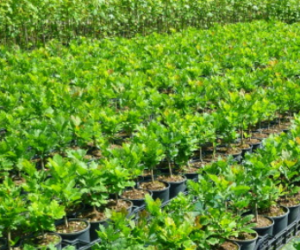
Vivaio Forestale Regionale “Selva del Campo”, in Campochiaro (CB): located at 1.680 ft above sea level, this facility covers more than 35 acres, 6 of which are dedicated to the actual real nursery with reforestation plants, ornamental species for schools, municipalities and several private associations; there are some 50 species including conifers (cypresses, pines, thujas, cedars) and broad-leaved trees (oaks, chestnuts, maples, ashes, lindens, elms, hornbeams). The nursery is also a research and experimentation centre for the production of truffle plants for all of Central and Southern Italy.
Distances to other nurseries: 291 miles to Sorbo Nursery – 274 miles to Il Giardino di S. Maria – 199 miles to Tropico del Conero Nursery – 130,5 miles to Il Giardino Officinale – 105,5 miles to Pungilandia – 105 miles to La Felce Nursery – 63,4 miles to Le Marinelle Forest Nursery – 54 miles to Verde Molise Nursery.
From here, you may want to proceed on another itinerary:
DISCOVERING NURSERIES: HEADING TO THE PO RIVER DELTA (Emilia Romagna/3), travelling to Les Collettes Nursery, some 16 miles North of Pesaro.
Alternatively, you may want to follow another itinerary:
DISCOVERING NURSERIES: AMONG PLAINS AND MOUNTAINS, FROM CASERTA TO AVELLINO (Campania/1), travelling some 55 miles to Marrone Stefano Nursery.
Attractions along the itinerary
While Marche Region also offers some ancient gardens, Abruzzo and Molise are rich in naturalistic and landscape wonders, including reserves, oasis, parks, botanical gardens, vineyards – truly unforgettable attractions! There are just too many, therefore we’d like to mention only one of them, while encouraging you to look them all up on www.italianbotanicalheritage.com, using these links:
luoghi.italianbotanicaltrips.com/marche/,
luoghi.italianbotanicaltrips.com/abruzzo/,
luoghi.italianbotanicaltrips.com/molise.
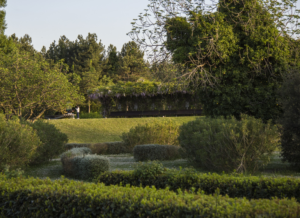
Parco Miralfiore, in Pesaro (PU): The Miralfiore Urban Park is in the very heart of Pesaro, close to the railway station to which is connected by an underpass. It covers about 50 acres, it is crossed by a cycle path and an elevated pedestrian path, as well as surrounded by trees and bushes. Full of nice and quite evocative sights, it is much appreciated by the citizens, also thanks to the large elliptical square and the natural amphitheatre, home to outdoor events and yoga classes. This park is also a true testament to some prominent local families (Della Rovere, Castelbarco, and Albani) as it’s a remarkable example of successful urban planning with a perfect blend of traces of the past with biodiversity preservation, without forgetting leisure and sports opportunities. The green facility is part of the large redevelopment project of the area led by Fulco Pratesi and launched in 1996; the agronomists and landscape architects Sabina Filippi and Alberto Giangolini, of Studio Associato Landesign from Pesaro, took an active part in it between 2000 and 2009. The part of the property that is now public used to be a thriving farm, where the typical elements of the Pesaro agricultural landscape have been preserved or reintroduced, such as rows of fruit trees and willows along the ditches, fields arranged according to traditional agricultural rotations, as well as traces of ancient vineyards.
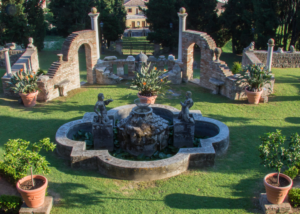
Villa Caprile, in Pesaro (PU): Villa Caprile, standing on the hills of Pesaro Urbino, dates back to 1640: it was built by Marquis Giovanni Mosca as a leisure resort; in fact, he created water games designed to catch visitors off guard, with sudden splashes and jets, thus providing some thrilling entertainment. Subsequently, Marquis Carlo Mosca Barzi and his son Francesco made other changes, including the construction of a chapel. In 1876, Villa Caprile became a valuable school of agriculture; sold to the local Provincial Administration in 1925, it is now home to the “Antonio Cecchi” Agricultural Technical Institute.

Parco Regionale del Monte Conero, Ancona: this park is a protected natural area established in 1987 and which extends on the promontory of the same name, in the province of Ancona. It includes a stretch of coast and an internal hilly belt, with breath-taking views, a lot of history, and wonderful landscapes. The park covers about 15.000 acres and extends over the territories of Ancona, Camerano, Numana, and Sirolo. Mount Conero, with its white coves of white stone, at 1.876 ft overlooking the Adriatic Sea, is a unique relief of its kind from Trieste to the Gargano. The eastern slopes on the sea are made of limestone cliffs, while the rest is dominated by vast Mediterranean plant formations and mixed woods.
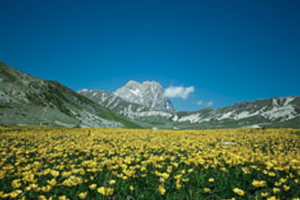
Altopiano di Campo Imperatore, Aquila: this vast valley was created from the work of floods and glaciers that slowly shaped the morphology of the slope, creating a unique landscape, where plains and slopes alternate without interruption for more than 26 km at a variable altitude of 1500-1900 m. The vastness of the place is enhanced by the exclusive presence of herbaceous plants that made it a perfect place for grazing and transhumance. Today, besides summer alpine pasture, the tableland is renowned for being one of the most suggestive ski areas in the Apennines, in winter, and, in summer, a popular hiking route.
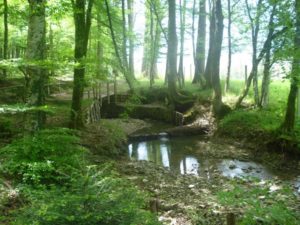
Riserva Naturale di Montedimezzo: This reserve Reserve is part of the biosphere established by Unesco as part of the MAB program (the acronym for “Man And Biosphere”). The complex, which also includes the Feudozzo and Pennataro Forests, is now the property of the State Forestry Company that manages it, with the exception of the Pennataro Forest, which belongs to the region of Molise. The reserve covers 719 acres with an irregular shape and it’s really a piece of paradise on Earth where the absolute silence of the wood is probably its most striking feature. The trees simply seem to “whisper”, gently stirred by the wind and the abundant birdlife. Turkey oaks and beeches are the most abundant species. The local fauna is quite variegated and includes wondrous specimens of wild cats, badgers, and foxes; nocturnal and diurnal birds of prey are simply spectacular, while turtle doves, jays, and wood pigeons are also abundant.

Arboreto Giancarlo Cipressi, Contrada Santa Maria Arabona, Manoppello (PE): this place, bravely realised by Cinzia Toto (journalist, editor of “Gardenia” and plant enthusiast) is dedicated to the memory of Giancarlo Cipressi (agronomist, mayor of Manoppello from 1983 to 1988 and big tree lover). This hides the objective of the collection: to become a place of learning, chiefly for the youngest, “an open-air schoolroom” to closely observe and know nature. It extends on 1 hectare and gathers more than 90 endemic trees and shrubs, like common oak (Quercus robur), Aleppo pine, Ginkgo biloba, yew, strawberry tree, camphor, hornbeam, carob, beech, sweetgum, dove-tree (Davidia involucrata), quince and olive. There grows also a plant that descends from the Nagasaki persimmon that survived the atomic bomb. The arboretum hosts shows, exhibitions and events dedicated to the landscape and its conservation, whereas the small library (with about 90 books about trees: from manuals to recognise the various species to illustrated books for children) is always open to the public.
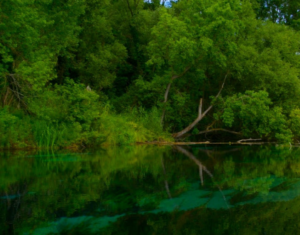
Riserva Naturale Regionale Sorgenti del Pescara, Popoli (PE): the Natural Regional Reserve Pescara Springs was established in 1986 and it is located in the municipality of Popoli (PE) and its extension is of about 50 hectares omitting the 86 hectares of the chafing piece. It lies at the feet of Colle di Capo Pescara and the reserve is composed of a crystal-clear pool of water, which was created by numerous big and small pools with waters from Campo Imperatore. The surrounding banks are occupied by dense rushes, which are the main element of the landscape. The elevation of Capo Pescara, formed by calcareous rocks, represents a dry environment that enriches the biodiversity of the area.
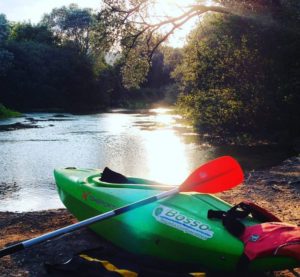
Fiume Tirino, in Bussi sul Tirino (PE): the Tirino River flows for 15,5 miles within the Gran Sasso National Park, in the province of Pescara (Abruzzo), among dense woods; in Europe, it is renowned for its clear and clean water. Il Bosso is a cooperative established in the small village of Bussi sul Tirino; it unites responsible tourism and environmental education, promoting many summer activities, among which the canoeing excursion to the spring of River Tirino.

Riserva Regionale Abetina di Rosello, Chieti: one of the most important forests of the Apennines is located at the border between Abruzzo and Molise and it is a reserve composed of Abies alba. What makes Rosello one of the most important local reserves is the presence of fir trees, which are also the reason why it was established in 1997, which is studied and protected here, while it has disappeared in other areas. The fir trees of Central Italy are different from the Alpine ones since they have developed the ability to adapt to warm Summer temperatures, like Abies alba subsp. of the Appennines, which germinates and grows thanks to a good exposure to the sun and has round apical needles.
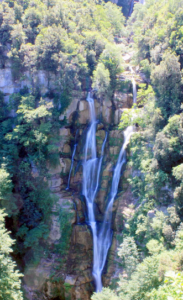
Cascate del Rio Verde, in Borrello (CH): The Rio Verde falls are located in the Guided Natural Reserve Verde Falls, near Borello, in the province of Chieti. The area extends over 287 hectares, 800 m above sea level. The waterfalls, the highest natural ones in Italy, are made up of a 200 m three-level jump. The vegetation is Mediterranean, with a dominance of holm oak (Quercus ilex) and downy oak (Quercus pubescens).
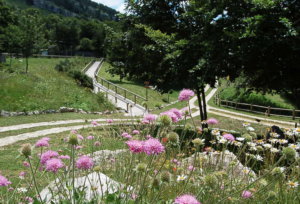
Giardino della Flora Appenninica, in Capracotta, Isernia: Established in 1963, the Garden of Apennine Flora of Capracotta is located at 5.003 ft above sea level, covering more than 25 acres and reaching the edge of a silver fir forest – a legacy of the Quaternary Era – on the northern slope of Mount Campo. It is a natural botanical garden, where the plant species of autochthonous flora of the central-southern Apennines are preserved and protected, as well as several different habitats, including marshland, rocky patches, groves of beech trees and shrubs. Inside the garden, in addition to several themed trails, the different habitats feature their specific collections of plants; in fact, there are also fir tree groves, mountain prairies, ponds and a swamp.
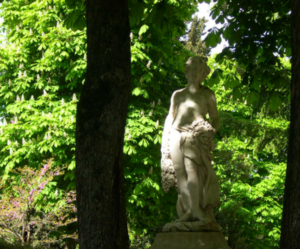
Villa de Capoa, in Campobasso: Villa De Capoa is in the Municipality of Campobasso. The origins of this place date back to the XVIII century. The urban culture of the time gave great importance to the role of gardens, avenues and belvederes which were considered places of recreation and public gatherings. People used to enjoy those spaces after work and Villa De Capoa (/also known as the “Municipal Villa”) was then a source of pride for the locals, as well as a popular attraction for visitors, botanists and nurserymen. Since then, this place has been subject to vandalism as well as terrible neglect and abandonment. In the second half of the XIX century, the villa and its 40-acre park were donated to the city of Campobasso by Countess Marianna de Capoa.
This post is also available in: Italian


Leave a Reply